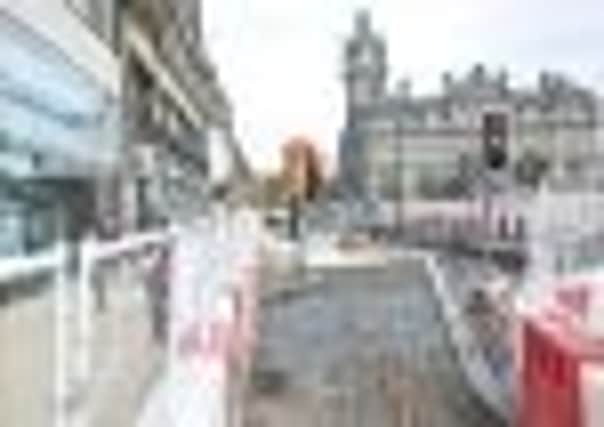‘Edinburgh’s tawdry, down-at-heel and tired’, summit told


Leading architects and developers mounted an outspoken attack at a summit called to discuss how the city should look once the tram is up and running.
The event, at Edinburgh Sheriff Court, heard how Edinburgh is slipping badly behind rival cities due to a lack of clarity about major developments, slow decision-making and the power wielded by a handful of objectors to major projects.
Advertisement
Hide AdAdvertisement
Hide AdLesley Hinds, the city’s transport leader, admitted a major problem was that “faceless” council officials had too much power within the local authority and regularly appeared to take decisions over the heads of elected politicians.
However, Councillor Hinds, who is in charge of the capital’s long-delayed tram project, revealed for the first time that she was in favour of the scheme being expanded into a city-wide network, but said she feared there was not enough public support for the move at present.
Among those to speak out at the event were award-winning architects Richard Murphy and Neil Gillespie, as well as Bruce Hare, chief executive of Duddingston House Properties, whose firm is in charge of efforts to bring the former Royal High School on Calton Hill back into use.
The summit was staged following years of acrimony in the city over major developments that have either been scrapped due to the strength of opposition or stalled due to the economic downturn.
The city’s tram project is running five years behind, work has only just got under way on the site of the Cowgate fire almost a decade after the blaze, and there are large gap sites in areas such as Caltongate and Haymarket – which came under the spotlight during a Unesco investigation into the city’s world heritage status. Several million pounds have been set aside for a huge promotional campaign for the city once the tram project is finished, but there are fears that not enough has been done to pedestrianise part of Princes Street or curb the levels of traffic using the Royal Mile.
Neil Gillespie, of Reiach & Hall Architects, said: “Edinburgh is a city feted for its image of castle and rock, a labyrinthine medieval city sitting high about south-facing gardens that herald a planned city of mythical order and elegance. However, my sense of this city is that it is complacent. It knows these ‘eyes half shut views’ are wonderful, memorable, unique.
“Open your eyes and the images are a mirage. The real city is down-at-heel, tawdry and very tired. Our lack of civic pride and collective action is exposed.”
Mr Murphy added: “The planning department in Edinburgh is one of the worst we’ve dealt with anywhere in the world. We never have the kind of mismanagement problems elsewhere that we do here, and all sorts of obstacles always seems to pop up.”
Advertisement
Hide AdAdvertisement
Hide AdMs Hinds said: “Edinburgh is a fantastic city to live in, but I don’t think anyone can underestimate how much damage has been done to the city’s reputation over the last few years by the tram project.”
Cllr Hinds said she was frustrated at the level of power “faceless” council officials had at their disposal and said some of them even regretted giving councillors ipads as it allowed them to gather personal evidence of things like the amount of rubbish and “clutter” littering the city centre.
The event was organised by the Cockburn Association, Edinburgh’s heritage organisation, whose director, Marion Williams, said the levels of infighting among different interest groups was like nowhere else in Britain.
Mr Hare, whose project to turn the old Royal High School into a luxury hotel has stalled, said potential investment from firms in London was being deterred by Edinburgh’s reputation as a difficult place to do anything.
He said: “The big issue when you look at other cities, like Manchester, Glasgow and London is the lack of leadership here.
“We need to have a clear vision of what the city is about, it needs to be linked to prosperity and there has to be absolute clarity on major planning applications at an early stage.”